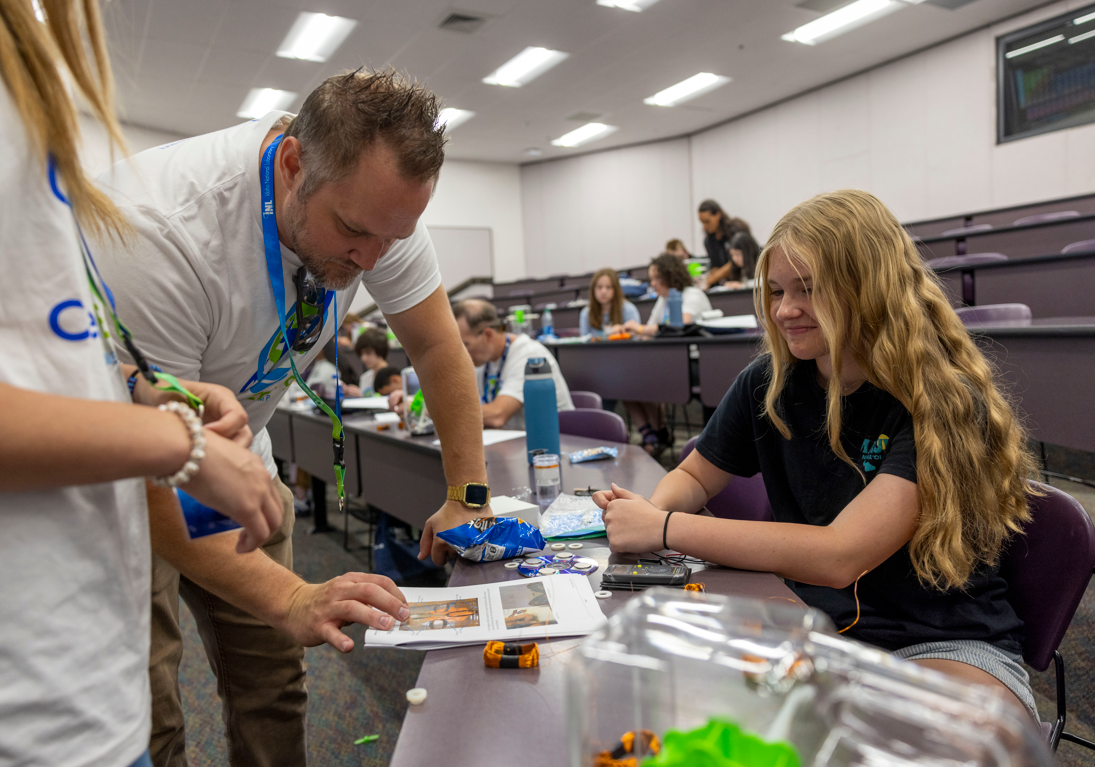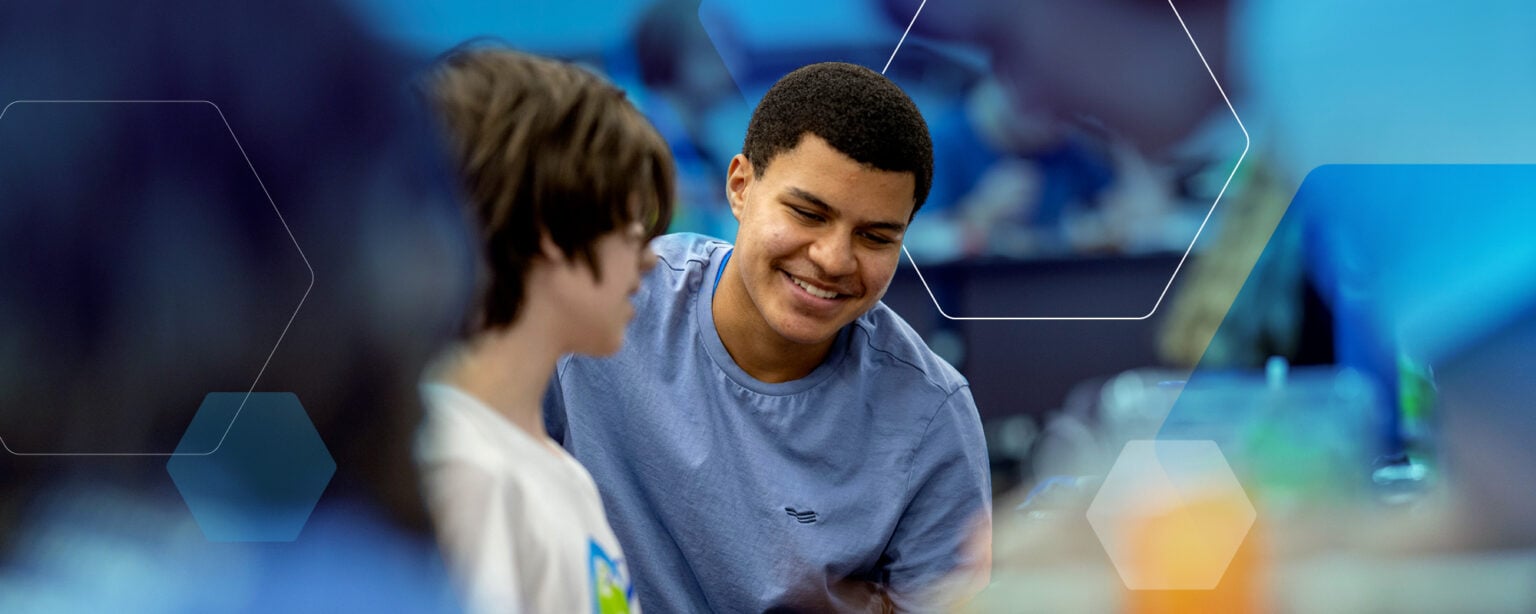As 17 students from three states headed back to school this fall, they took with them a broad array of knowledge they picked up this summer at Idaho National Laboratory’s Clean Energy Camp. The camp, which ran from June 24 to June 27, offered high school students interested in science, technology, engineering and math (STEM) subjects an introductory look into everything from electric vehicles and advanced batteries to rare earth elements and bioenergy and how they apply toward clean energy technologies.
A new addition to INL’s STEM Scholars Program, the four-day camp went from 9 a.m. to 4 p.m. each day. Students got to meet with experts and participate in hands-on activities, simulation games, and site tours. The purpose of the camp is to inform and inspire young minds with ideas about how to convert the United States to a net-zero carbon economy, also to pique their interest in STEM-focused clean energy careers.
“I was honestly surprised at how focused the students remained during my 45-minute talk,” said Chloe Tolbert, an INL researcher involved in critical materials recovery and recycling. “They found the many different applications of critical materials fascinating and were surprised to hear about some not-so-common uses, such as critical metals being used in satellites. They were able to recall specific critical materials and applications throughout the duration of the talk. It personally made me hopeful for the next generation of scientists and engineers.”

Tolbert said she would frequently pause to recap and ask questions. “Lots of students would raise their hands, so they were very eager to share what they had learned,” she said. “I was surprised how enthusiastic they were. I certainly wasn’t like that at their age!”
On the day devoted to hydropower, INL researcher Trevor Atkinson took the group on to Idaho Falls Power’s Bulb Turbine plant, just south of the Broadway Bridge. There they got to tour the plant and learn about Idaho Fall’s history of hydropower generation, which dates back to the early 20th century. Idaho Falls Power and INL are frequent collaborators, with the municipally owned utility’s five dams providing the lab with a backyard test bed for researching and improving hydro-electric generation.
“I was just sharing basic power principles, but it was probably all new to them,” Atkinson said. “We talked about new concepts for hydro-electric generation beyond building big dams.”
Students also toured the Biomass Feedstock National User Facility, where researchers study how to convert everything from municipal solid waste to wood chips and corn stalks into fuels and chemicals for advanced manufacturing.

“It was a fun group,” said Rachel Emerson, an INL biomass researcher. “They were interested in understanding the different types of biomass, wet and dry, and the different processes that we use on them.”
The BFNUF has a number of high school interns this summer, and the INL hosts were keen to mention to the camp participants, many of them sophomores, that internships are a great way to get involved with clean energy on the ground floor.
This was the first year for the Clean Energy Camp, which is part of INL’s STEM Scholars Program, which offers camps to students from first grade through high school. The goal is to expose young people to every aspect of the lab’s clean energy mission, which includes nuclear, biomass, wind and solar, geothermal and hydrogen production. Other camps deal with cybersecurity, showing students INL’s capabilities in securing the nation’s critical infrastructure against hackers and other malicious actors at large in the world.
Jennifer Jackson, who heads INL’s K-12 program, said the camps—which are free—fill up fast as soon as registration opens in April. This summer, more than 600 students are participating. “I talked to one parent whose daughter was really excited about the hands-on aspect of the Clean Energy Camp,” Jackson said. “She told me she was surprised to learn there was more to INL and clean energy than she ever imagined.”
As with any first-year program, Jackson said they plan to expand the Clean Energy Camp in 2025. Planning the camps is a yearlong process and involves finding subject matter experts who can relate easily to students. “We’ll use this as a launching pad as we get a sense for what worked and what kids were excited about,” Jackson said.





